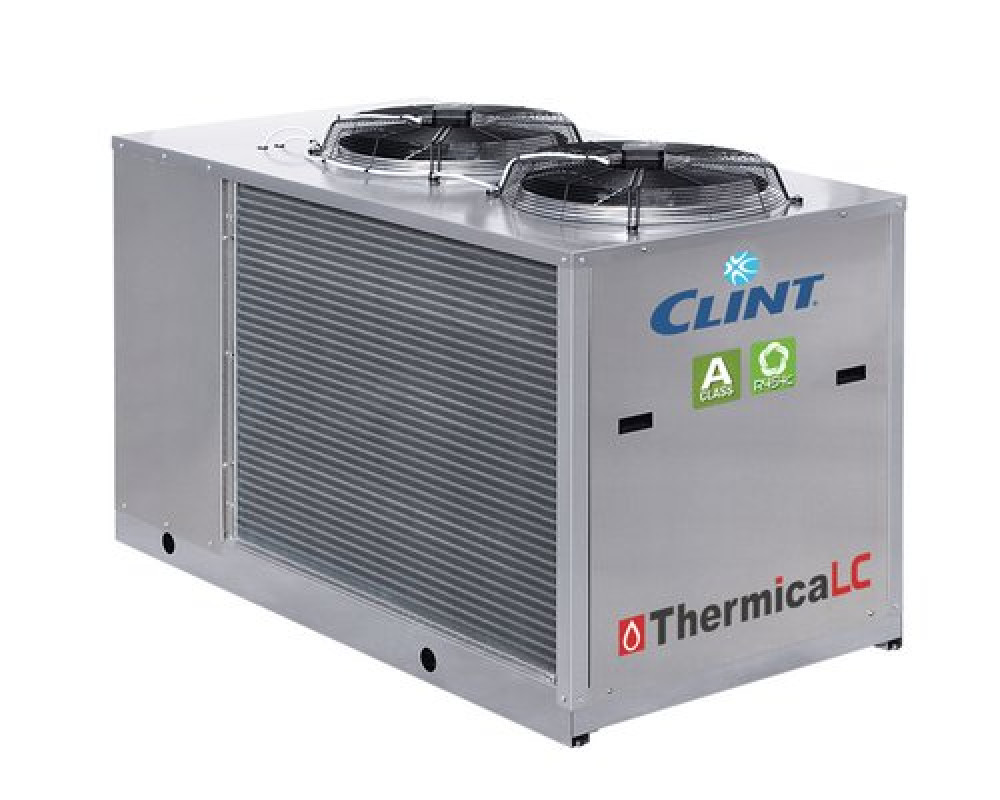Air Source Heat Pump Products
Compact Line
Heat pumps with a capacity up to 25kW and antifreeze heater ideal for domestic use
Thermica
Thermica heat pumps reach temperatures up to 65°C with high efficiency at partial loads
Energy Power
Heat pumps with capacity up to 587kW deploying refrigerants R452B and R434B
Multi Power
Multi Power heat pump options include inverter scroll or standard scroll compressors reaching capacity over 1MW
Air Source Heat Pumps
- Cooltherms range of air to water industrial and commercial heat pumps cover a heating range from 10kW to 1mW+
- Our air source heat pumps (multi-circuit machines) can provide continuous heating to -10°C ambient conditioning even during the required defrost cycle.
- Our standard typical air source heat pumps operating on R1234ze or R290 (green refrigerants) typically provide water production up to 50°C. High temperature outputs of up to 70°C can be robustly achieved with our cascade refrigerant circuit technology.
- Should higher temperatures be required of over 70°C to 110°C then a CO2 solution is required.
How do air source heat pumps work and why are they more efficient than gas or electrical heating?
Even cold ambient air contains useful energy...
In an air source heat pump refrigerant is evaporated in the external air-side heat exchanger, this vapour is then compressed by the compressor and pushed into an internal (air or water) condenser where the heat is removed condensing the vapour back into a liquid. It is this removed heat which is used to heat the water or space.
Typically for every 1kW of electrical energy consumed by the compressor, it moves 3kW of heat from the ambient air to the inside space or water circuit, giving a coefficient of performance of 4:1 becuase the 1kW of compressor energy also ends up as useful heat.
Defrosting...
The air-side heat exchanger becomes cold in operation and as ambient temperatures drop ice forms on the fins of the evaporator coil. Sensors in the evaporator coils monitor the build-up of ice and when the unit needs to defrost the refrigerant cycle is reversed for a short time at “part load” to put heat into the coil and remove the ice. On units with multiple circuits only one circuit will defrost at any one time ensuring a constant positive heat output from the unit.

Benefits
Air source heat pumps convert ambient air into usable heat, which significantly reduces overall energy consumption and greenhouse gas emissions.
Businesses will benefit from lower heating costs, enhanced energy efficiency, and eligibility for government incentives aimed at promoting renewable energy use. Air source heat pumps present an easier-to-install option compared to other alternatives, with lower upfront infrastructure requirements.
They are particularly well-suited for sectors such as office buildings, education, and light manufacturing facilities where space heating and cooling are crucial.
Applicable Sectors

University and Education

Factory/Manufacturing
Get in touch and let us help you cut your running costs and improve performance today